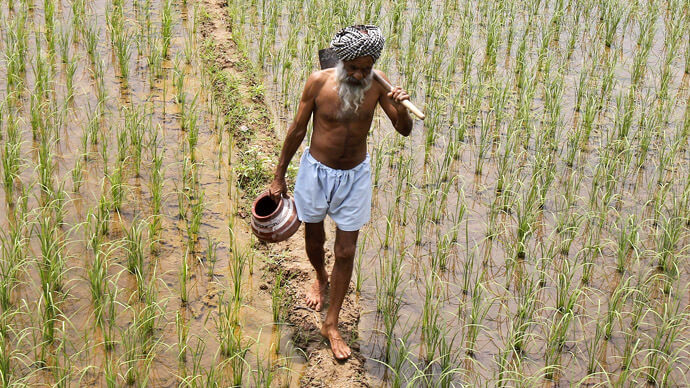The Society organized a lecture on “Who will Feed India” delivered by Pallav Mukharjee on November 30, 2019 at 10:30 am at Institute of Forensic Science (UIPS Building), Panjab University, Chandigarh under its regular activity “Monthly Lecture Series”.
Abstract: It is not just India – it has now become a global problem. Farmers, as we used to know them, are finished.
In India alone, nearly 12 crores, almost a quarter of the Indian workforce, are affected. That’s almost double the US population, or 4/5th of Europe’s. Meanwhile, farm bankruptcies across the US are on the rise. The Wall Street Journal reported this month that Midwestern farms have been filing for bankruptcy protection at rates not seen in a decade.
The returns on agriculture are diving downwards.
This explains the meager earning of farming households. According to government estimates, an agricultural household’s (which comprises of five members) in India annual earning was Rs 96,703 in 2015-16. But, a small and marginal farming household (with landholding of up to 2 hectares and less) earns just Rs 79,779 a year, or Rs 221/day for five members to survive. Such households account for 82 per cent of India’s total landholdings. But out of this total income, farm earning will be just around 41 per cent at an average. So, cultivation earns around Rs 90 a day.
There is a big difference between the earnings of a small farming household and a big farming one (having at least 10 hectares). A typical big farming household earns Rs 6,05,393 a year, almost eight times that of a small farming household. Clearly, farmers are not earning a profit from their produce. A survey of 23 crops for investment and income during 2004-2014 shows that barring a few, a farmer is no more making any money.
In addition, there exist other problems – toxic lands, disappearing water, receding aquifers, increasing farm input costs, loss of workforce, land grab – by industry and urban growth, politics & appeasement, lack of voice in the polity, lack of unions to fight for their cause, lack of public perception or visibility, changing governmental policies, which are anyway subservient to powerful industrial, commercial or real estate lobbies; plus desertification and climate-change. Even God seems to be against the farmer! The entire gamut of policies and problems are loaded against the farmer – no matter what the newspapers say, or try and project.
As per Registrar General of India & Census report 2011 the total population of farmers or cultivators is 118.7 million (2011), & that of agricultural workers/labourers is 144.3 million – 31.5 % of rural population. The grim picture is the total numbers of farmers because we always see in percentage.
American farmers are facing the most debt in decades. Debt among farmers in the US has jumped to $409 billion according to Agriculture Secretary Sonny Perdue. That’s up from $385 billion a year earlier and is at levels last seen during the farming crisis in the 1980s. The agricultural sector has come under pressure in recent years amid sinking commodity prices and climbing production costs.
About the Speaker: Pallav Mukherjee graduated from the Panjab University in 1973 to team up with a senior from university to start a fledgling practice in design and infrastructure development of scientific projects. Later, he joined the UT Administrative services for a few years only to resign from his post as Assistant Professor to take up partnership in scientific projects, with colleague from the scientific fraternity in university.
This lasted till 1981 when he branched out on his own to form research designs which metamorphosed into mega scientific projects. It is lightly said that Pallav has upgraded from being in academics, to professional practice and now to being spokesperson for current scientific problems like constraints in agriculture planning and water resources – all because of the planning shortsightedness.
Amongst other things, Pallav was the Chairman of the local chapter of the IIA, the current chapter Chairman of the IIID, and served as the Rotary President. From there he moved on to become a member of the Advisory Body to the Governor, Punjab for two sessions (2004-2008).
In 2007, he was nominated to serve as a Councilor in the Municipal Corporation of Chandigarh for a period of 5 years in the 3rd House.
Currently, he is the President of the local private scientific body for the popularization of scientific projects being conceived for the welfare of society which has manifested itself in the forming of various scientists groups to look into welfare of scientific issues especially agriculture.
The topic of Pallav’s lecture is very relevant and crucial to the growth and well being of the people of India.

